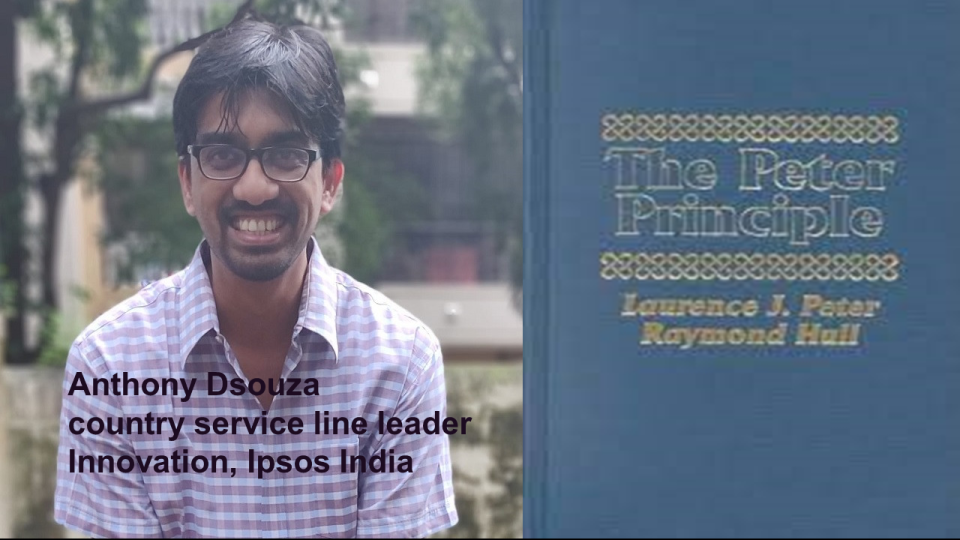

Peter’s Inversion - Are we rewarding the right behaviours?
A friend of mine (Client officer) was in a hurry to send over some quotes to a regular client. So, after a brief discussion with the company’s CEO, he approached the executive to complete the task.
“Do you have the necessary approvals in place,” said the executive.
“Yes. I just spoke to the CEO. Here is the email confirmation,” said the officer
“As per the process, you need to fill these forms and get a written approval from the department head of finance and legal to proceed,” said the executive.
“But I have a written approval from the CEO,” said the officer.
“Yes, I know it, but quotes are approved by finance and terms signed off by legal, so I’m not allowed to proceed.”Have you had a similar experience? The executive knows and understands the urgency but, for some reason, does not act. Have you ever been confronted with individuals in your organization who are so compliant that you need to go back and refill a form because you did not dot the i’s and crossed the t’s?
You may have heard of the story of “The man without a country - Michael Patrick O’Brien”, who was kept on a ferryboat for 11 months between Hongkong and Macao, which is otherwise a 4-hour boat journey. Both the Portuguese authorities in Macao and the British authorities in Hong Kong refused to let him land because he was without proper credentials. He survived because his friend used to send him money to buy food, and the captain let him stay for free on the boat.This obsession with getting forms filled out correctly or rules adhered to the T, whether they serve any useful purpose, is particularly common among junior officials. This type of behavior is called “Professional automation” or “Peter’s Inversion”. The concept was first introduced as a satire in the book “The Peter principle”, written by Laurence Peter and Raymond Hull.Internal consistency is valued much more than efficient service.
The executive has inverted the means-end relationship, and hence the executive is referred to as Peter’s Invert. The process/ paperwork is more important than its initially designed purpose.
WHO IS TO BLAME?
A Peter’s Invert is obediently doing the task laid out by his seniors. If anyone is to blame, it would be his seniors. His seniors evaluate competence based on obedience to the rules. Neatness, courtesy, and paperwork are highly regarded and someday will probably get him promoted.
Smaller requirements laid down by the immediate superiors are drilled so effectively that Peter’s Invert tends to lose sight of more significant organizational goals.
According to Laurence & Raymond, “He no longer exists to serve the public; he sees the public as raw material to maintain him, the forms, the rituals, and the hierarchy.”
Superiors get it wrong because they evaluate competence in behavior, i.e., Promptness, neatness, and courtesy, i.e., the superior evaluates input. A competent superior should ideally evaluate subordinates on the performance of useful work, i.e., evaluates output.
Peter’s invert exists because superiors reward the wrong behaviours.
On the other hand, extraordinarily skilled and productive employees often face criticism in most organisations and are fired if they don’t abide. Their presence disrupts and therefore violates the first commandment of hierarchical life: the hierarchy must be preserved.
Alas! Competence like beauty, lies in the eye of the beholder.The distribution of competence is expected to follow a ‘normal’ distribution in every organization. Individuals at the ends on both sides of the graph tend to be fired.See the chart below.
HOW DOES IT AFFECT ORGANISATIONS?Good followers do not make good leaders. A good follower in a leadership position tends to reduce efficiency among his subordinates and wastes the time of his superiors. He is also not likely to possess any leadership qualities.
Each time a Peters Invert climbs up the ranks, it strengthens the inversion. They start to make new regulations and processes to cover infrequent cases. This behavior is typical for institutions where the end goal remains blurred, large institutions like government offices.
HOW CAN ORGANISATIONS AVOID “PROFESSIONAL AUTOMATION”?The following steps can be undertaken to minimize the effects: -
- Awareness & empowerment: Organizations pay a lot of attention to compliance but not as much to creating awareness as to why specific actions are good for you. Individuals managing the process should be made to understand the “Why-How-What” in this order (Simon Sinek) and be empowered to take decisions. Individuals who understand the “Why” will believe and deliver on organizational goals.
- Clarity of the ‘End Goal’: Smaller organisations tend to be immune to such behaviours as the purpose is engraved with day-to-day interactions with business leaders. Larger organisations will need to make extra effort to ensure department goals align with overall organizational goals. We should refrain from setting documentation or department-specific goals; goals should be around enhancing skills or purpose-led organizational goals. Regular training needs to be provided to superiors who outline department goals.
- Focus on efficiency: Functions must deliver their services at a competitive and continuously improving cost. Leverage new technologies, remove processes that are a waste and cut services that are not essential. We need to put the customer and internal clients first, prioritizing their experience and expectations over our own.
- Continuous training: Employee training programs help improve the knowledge and skills of employees to match the various changes in the industry. It reinforces the end goals and prepares employees for higher responsibilities.
This post is a subjective view from the author. There are plenty of other factors to make Peter’s Invert in the real world. Many of the concepts listed here have been borrowed from the book “the peter principle” by Laurence Peter and Raymond Hull.
Author: Anthony Ambrose Dsouza



